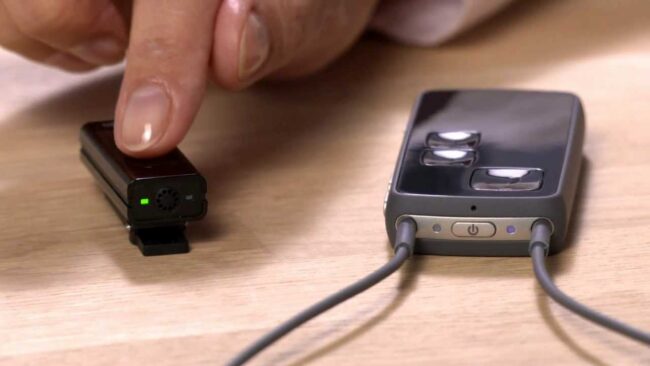With the rise of streaming devices like Amazon Firestick, Android TV boxes, and Kodi media centers, the way users access online content has evolved r
With the rise of streaming devices like Amazon Firestick, Android TV boxes, and Kodi media centers, the way users access online content has evolved rapidly. One method used by some streaming apps and Kodi add-ons to simplify access is through pairing URLs like vev.lo/pair. This article explains what vev.lo/pair is, how it works, how to use it safely, common issues and solutions, and answers to frequently asked questions.
What is vev.lo/pair?
Vev.lo/pair is a web-based pairing portal used by various third-party streaming applications and Kodi add-ons. Instead of traditional username and password authentication, vev.lo/pair acts as a temporary access gateway that lets users authorize their streaming device through a simple browser-based verification process.
When you launch a streaming add-on or app that requires pairing, it displays the vev.lo/pair URL on your screen. You then visit this URL on a separate device such as your smartphone or computer, complete a verification (like a CAPTCHA), and the streaming device receives access for a limited time—typically around four hours.
This method has gained popularity because it reduces the complexity of account management while still controlling who can stream content.
How Does vev.lo/pair Work?
The process is fairly straightforward:
- Start your streaming app or Kodi add-on on your Firestick or Android TV device.
- The app prompts you with a pairing URL, usually vev.lo/pair.
- Open a web browser on a second device (smartphone, tablet, or PC).
- Enter vev.lo/pair in the browser.
- Complete a CAPTCHA or verification step to confirm you are human.
- Confirm the pairing or activation button on the web page.
- Your streaming device automatically receives authorization and begins streaming.
This method bypasses the need for traditional user accounts, passwords, or subscription sign-ins. Instead, access is granted temporarily and is based on session validation.
Devices and Platforms Compatible with vev.lo/pair
Vev.lo/pair is mostly seen in:
- Amazon Firestick and Fire TV devices: Widely used with Kodi and third-party APKs.
- Android TV boxes and generic Android devices: Any device running compatible streaming apps or Kodi builds.
- Kodi Media Player: Popular open-source platform that supports numerous add-ons requiring pairing.
- Smartphones and Tablets: Used to complete the pairing verification step.
It is important to understand that vev.lo/pair is not officially affiliated with Kodi or Amazon but is a service used by certain third-party developers.

Why Use vev.lo/pair Instead of Traditional Logins?
Many streaming add-ons choose vev.lo/pair for these reasons:
- Ease of Access: No need for user accounts or passwords.
- Temporary Authorization: Limits how long content is accessible, helping prevent unauthorized long-term use.
- Less Overhead for Developers: No need to build complex login infrastructure.
- User-Friendly: Simple pairing process users can complete quickly.
However, this convenience comes at the cost of having to repeat pairing every few hours and sometimes dealing with occasional connection or verification errors.
Step-by-Step Guide: How to Use vev.lo/pair
Here’s a detailed guide to pairing your device:
Step 1: Open Your Streaming Add-on or App
Launch the streaming add-on or app on your Firestick, Android box, or Kodi setup. Navigate to a stream that requires pairing, and note the displayed pairing URL (vev.lo/pair).
Step 2: Use a Separate Device to Visit vev.lo/pair
On a smartphone, tablet, or computer, open a web browser and type vev.lo/pair in the address bar.
Step 3: Complete the CAPTCHA
You will be asked to confirm you are not a robot by completing a CAPTCHA or similar verification.
Step 4: Confirm Pairing
Click the “Activate,” “Pair,” or similarly labeled button on the website to authorize your device.
Step 5: Return to Your Streaming Device
The streaming device should display a confirmation that pairing was successful, and the video stream should now begin playing.
Troubleshooting Common Issues
Even though the process is simple, users can face some issues. Here are common problems and how to fix them:
1. vev.lo/pair URL Won’t Load
- Check internet connection on your device.
- Switch browsers or devices if the page doesn’t load.
- Disable VPN or proxy services temporarily, as these might block access.
2. CAPTCHA Does Not Show Up
- Clear your browser cache and cookies.
- Try using incognito/private browsing mode.
- Disable ad blockers or privacy extensions that may interfere.
3. Pairing Fails or Times Out
- Double-check that your streaming device’s clock and timezone are correct.
- Restart your streaming device and app, then try again.
- Attempt pairing during off-peak hours to avoid server overload.
4. Streaming Stops After Some Time
- This is expected behavior since pairing grants temporary access, usually four hours.
- Simply repeat the pairing steps when your stream stops.
5. No Pairing URL Displayed on Device
- Update your Kodi add-on or streaming app to the latest version.
- Restart the device and check again.
Is vev.lo/pair Safe and Legal?
The vev.lo/pair URL itself is just a web portal used for device authorization; it is neither harmful nor malicious on its own. However, the legality and safety depend on the content accessed after pairing.
- Legal content: If the streaming app provides content legally, using vev.lo/pair is generally safe.
- Illegal or pirated content: Many third-party streaming apps use vev.lo/pair to provide free access to copyrighted content without permission. This is illegal in many countries.
Always verify the source of your streaming apps and be mindful of the laws in your region.
Tips for a Smooth vev.lo/pair Experience
- Use a modern browser (Chrome, Firefox, Edge) on your secondary device.
- Avoid pairing multiple devices simultaneously.
- Disable VPNs and ad blockers when pairing.
- Make sure your device date and time settings are accurate.
- Pair only when your previous session expires to maximize streaming time.
- If possible, use a wired internet connection for stability.
Frequently Asked Questions (FAQs)
Q1: How long does vev.lo/pair pairing last?
A1: Pairing usually lasts about four hours, after which you need to re-pair to continue streaming.
Q2: Can I use vev.lo/pair on multiple devices at the same time?
A2: While possible, pairing multiple devices simultaneously may cause errors. It’s recommended to pair devices one at a time.
Q3: Is vev.lo/pair an official Kodi service?
A3: No. Kodi does not officially support vev.lo/pair; it is used by third-party add-ons.
Q4: What should I do if the pairing page doesn’t load?
A4: Check your internet, try a different browser or device, disable VPNs or proxies, and clear browser cache.
Q5: Do I need to create an account to use vev.lo/pair?
A5: No, pairing does not require any account creation or login.
Q6: Why am I stuck on “not a robot” verification?
A6: This is a CAPTCHA to prevent bots. If it doesn’t proceed, try disabling browser extensions or use a different browser.
Q7: Is it safe to use vev.lo/pair?
A7: The URL itself is safe, but streaming apps that use it can vary in trustworthiness. Use reputable apps and maintain good security hygiene.
Q8: Can I pair using my smartphone?
A8: Yes, any device with a modern browser can be used for pairing.
Q9: My streaming stopped suddenly; what now?
A9: Your pairing session likely expired. Repeat the pairing process to restore access.
Q10: What if I see an incorrect URL or no URL at all?
A10: Ensure your streaming app or Kodi add-on is up-to-date, restart your device, and check for updated instructions.
Final Thoughts
Vev.lo/pair is a user-friendly, temporary authorization system that facilitates streaming on devices without complicated logins. While it makes accessing content easier, users should be cautious about the content source and legality.
By understanding how vev.lo/pair works and following best practices, you can enjoy smooth streaming experiences on your Firestick, Android TV box, or Kodi setup.
More Must Visit: infromednation




COMMENTS